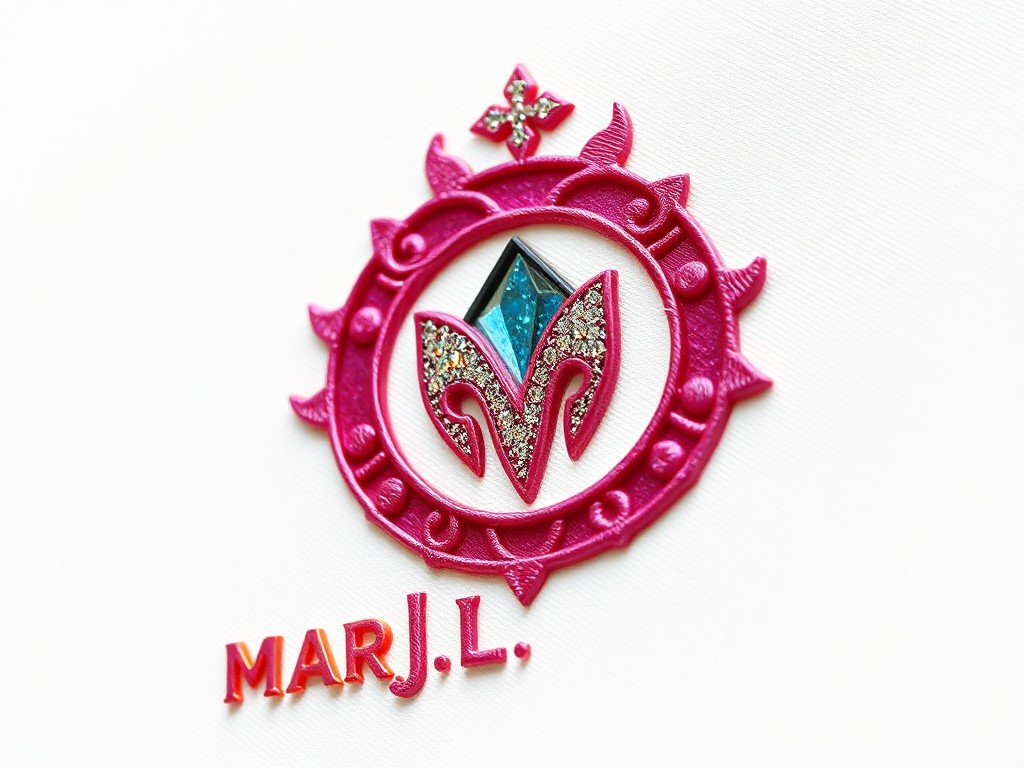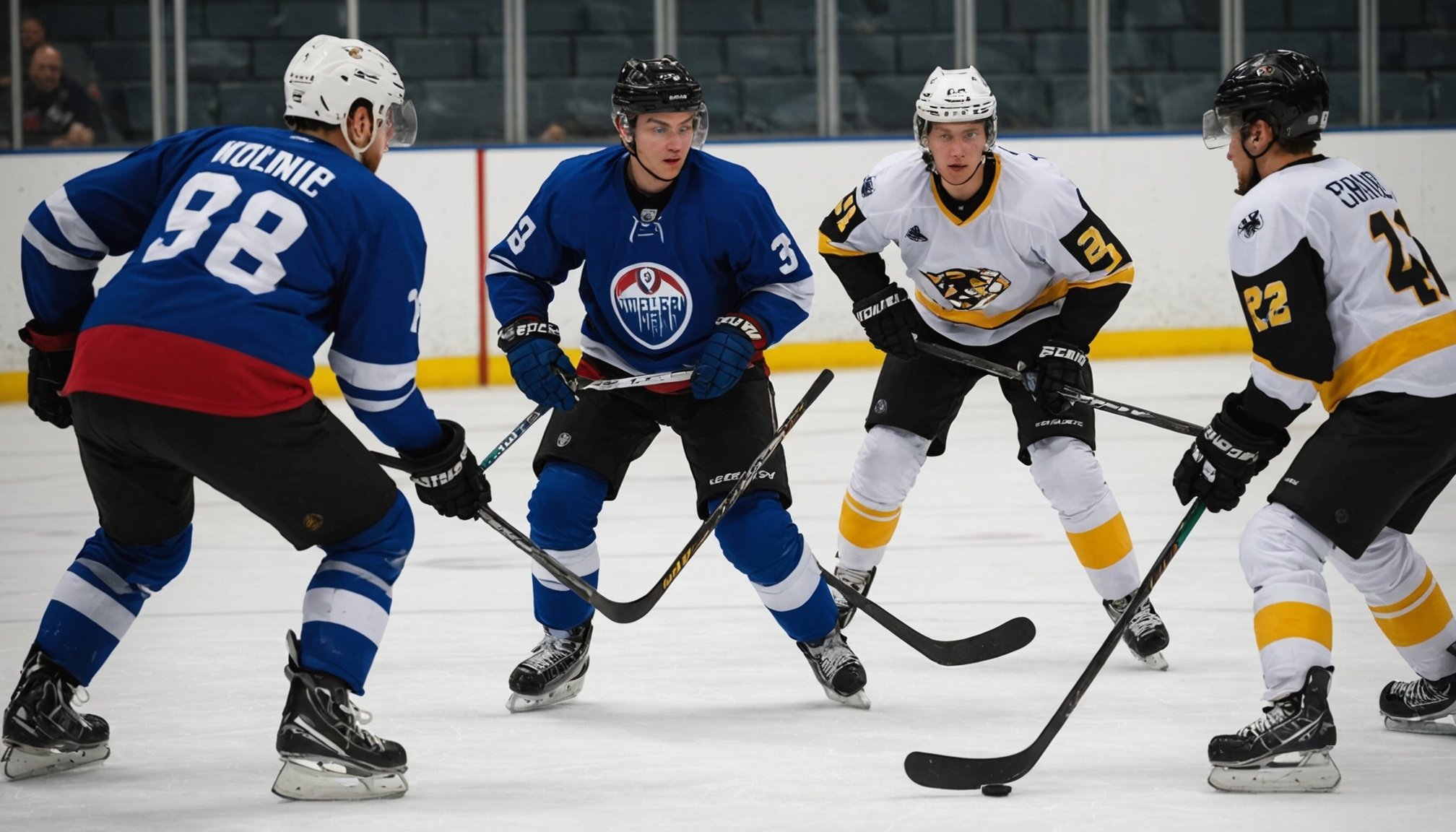Mastering Dynamic Warm-Up Techniques for Youth Ice Hockey Teams: A Comprehensive Guide
When it comes to preparing young hockey players for the demands of the ice, a well-structured warm-up is more than just a routine; it’s a crucial component of their overall training and development. In this guide, we’ll delve into the world of dynamic warm-ups, exploring why they are essential, how to design effective warm-up sessions, and what specific exercises can help your youth ice hockey team perform at their best while minimizing the risk of injury.
Why Dynamic Warm-Ups are Essential for Youth Ice Hockey
Dynamic warm-ups are a far cry from the static stretching routines of the past. These active, movement-based warm-ups are designed to prepare the body for the intense physical demands of ice hockey. Here are a few key reasons why dynamic warm-ups are indispensable for young hockey players:
In parallel : Essential Strategies for Modifying Training Loads in Young Athletes to Avert Overuse Injuries
- Injury Prevention: Dynamic warm-ups help increase blood flow and temperature in the muscles, tendons, and ligaments, making them more resilient to the stresses of the game. This is particularly important for youth players, whose bodies are still developing and may be more susceptible to injury[2].
- Improved Performance: By mimicking the movements and actions of the game, dynamic warm-ups can enhance a player’s speed, agility, and reaction time. This translates to better performance on the ice, as players are more prepared to execute complex movements and quick changes of direction[2].
- Enhanced Strength and Power: Many dynamic warm-up exercises incorporate strength training elements, which can help build the strength and power needed for explosive movements on the ice. For example, exercises like squats and lunges can improve lower body strength, while push-ups and rows can enhance upper body strength[1].
Designing Effective Dynamic Warm-Up Sessions
Creating an effective dynamic warm-up session involves several key components. Here’s how you can structure your warm-ups to maximize their benefits:
Start with Light Cardio
Begin with light cardio exercises to get the heart rate up and warm the muscles. This could include jogging laps around the rink, jumping jacks, or even a light skate around the ice.
In the same genre : Ultimate Guide to Acclimatizing Athletes for Success in High Humidity Conditions
Incorporate Movement Patterns
Include exercises that mimic the movement patterns of ice hockey. For example:
- Leg Swings: Front and back leg swings to loosen the hips and legs.
- Arm Circles: Forward and backward arm circles to warm up the shoulders.
- Lateral Shuffles: Side-to-side shuffles to prepare the legs for quick changes of direction.
- Carioca Drills: Alternating feet in a zig-zag pattern to improve agility and coordination.
Focus on Strength and Power
Incorporate strength and power exercises that target key muscle groups. Here are some examples:
- Squats: Strengthens the lower body and improves power.
- Lunges: Targets the legs, glutes, and core.
- Push-Ups: Strengthens the upper body, particularly the chest, shoulders, and triceps.
- Rows: Targets the back and arms.
- Box Jumps: Improves explosive power.
Include Puck Handling and Skating Drills
To make the warm-up more specific to ice hockey, incorporate drills that involve puck handling and skating. For example:
- Weave Through Cones: Players weave through cones while maintaining control of the puck.
- Figure-Eights: Players skate in figure-eight patterns around cones or markers.
- Puck Handling Relay: Players pass the puck to each other while moving at different speeds.
Sample Dynamic Warm-Up Routine
Here’s a sample dynamic warm-up routine that you can adapt for your youth ice hockey team:
Light Cardio (5 minutes)
- Jogging laps around the rink
- Jumping jacks
Movement Patterns (10 minutes)
- Leg swings (front and back)
- 3 sets of 15 reps each
- Arm circles (forward and backward)
- 3 sets of 15 reps each
- Lateral shuffles
- 3 sets of 20 yards each
- Carioca drills
- 3 sets of 20 yards each
Strength and Power Exercises (10 minutes)
- Squats
- 3 sets of 10 reps
- Lunges
- 3 sets of 10 reps per leg
- Push-ups
- 3 sets of 10 reps
- Rows (using resistance bands or light weights)
- 3 sets of 10 reps
- Box jumps
- 3 sets of 10 reps
Puck Handling and Skating Drills (10 minutes)
- Weave through cones
- 3 sets of 20 seconds each
- Figure-eights
- 3 sets of 20 seconds each
- Puck handling relay
- 3 sets of 20 seconds each
Practical Insights and Actionable Advice
Make Sure to Keep it Dynamic
Avoid static stretches during the warm-up phase. Instead, focus on dynamic movements that mimic the actions of the game. As Dany Bernard, who has worked extensively in hockey and sports development, emphasizes, “Dynamic warm-ups should be engaging and movement-based to prepare the body for the demands of the sport”[4].
Tailor the Warm-Up to the Player’s Needs
Each player may have different needs based on their position, skill level, and any existing injuries. For example, a goalie might need more upper body warm-up exercises, while a forward might focus more on speed and agility drills.
Incorporate Injury Prevention Techniques
Incorporate exercises that specifically target injury prevention. For instance, exercises that strengthen the core and improve balance can help reduce the risk of injuries such as concussions and knee sprains. Dr. Suzanne Leclerc, who has extensive experience in sports medicine, notes, “Injury prevention is a critical component of any training program, and dynamic warm-ups can play a significant role in this”[4].
Table: Comparing Dynamic Warm-Up Exercises
Here’s a comparative table of different dynamic warm-up exercises, highlighting their benefits and how they can be incorporated into a youth ice hockey warm-up routine:
| Exercise | Benefits | How to Incorporate |
|---|---|---|
| Leg Swings | Loosen hips and legs, improve flexibility | Front and back leg swings, 3 sets of 15 reps each |
| Arm Circles | Warm up shoulders, improve flexibility | Forward and backward arm circles, 3 sets of 15 reps each |
| Lateral Shuffles | Prepare legs for quick changes of direction | Side-to-side shuffles, 3 sets of 20 yards each |
| Carioca Drills | Improve agility and coordination | Alternating feet in a zig-zag pattern, 3 sets of 20 yards each |
| Squats | Strengthen lower body, improve power | 3 sets of 10 reps |
| Lunges | Target legs, glutes, and core | 3 sets of 10 reps per leg |
| Push-Ups | Strengthen upper body | 3 sets of 10 reps |
| Rows | Target back and arms | 3 sets of 10 reps using resistance bands or light weights |
| Box Jumps | Improve explosive power | 3 sets of 10 reps |
| Weave Through Cones | Improve puck handling and agility | 3 sets of 20 seconds each |
| Figure-Eights | Improve skating agility and puck control | 3 sets of 20 seconds each |
| Puck Handling Relay | Improve puck handling and team coordination | 3 sets of 20 seconds each |
Quotes from Experts
- “Dynamic warm-ups are not just about getting the heart rate up; they’re about preparing the body for the specific demands of the game. By incorporating movement patterns and strength exercises, you can significantly enhance a player’s performance and reduce the risk of injury.” – Stéphane Auger, Director General at Hockey Québec[4].
- “Injury prevention is a critical component of any training program. Dynamic warm-ups that include exercises targeting core strength and balance can help reduce the risk of injuries such as concussions and knee sprains.” – Dr. Suzanne Leclerc, Director Medical at INS Québec[4].
Dynamic warm-ups are a vital part of any youth ice hockey training program. By understanding the importance of these warm-ups, designing effective sessions, and incorporating specific exercises, you can help your players perform at their best while minimizing the risk of injury. Remember to keep the warm-ups dynamic, tailor them to the players’ needs, and incorporate injury prevention techniques. With the right approach, your young hockey players will be ready to take on the challenges of the ice with confidence and skill.
Visual Aids and Resources for Dynamic Warm-Ups
Dynamic warm-ups are essential, and having the right warm-up resources can enhance their effectiveness. Among these, demonstration videos stand out as invaluable tools. They offer a clear visual guide, making it easier for individuals to understand and replicate movements accurately. Watching professional trainers in action can provide insights into proper form and technique, reducing injury risk.
Different types of visual aids, such as diagrams and infographics, can also aid in illustrating exercises step-by-step. These are particularly beneficial for beginners who need visual cues to grasp the movements.
For those seeking more interactive learning, numerous coaching materials are available online. Platforms like YouTube and educational websites offer comprehensive video demonstrations that cater to all skill levels. Whether you’re a coach looking to diversify your training regimen, or an athlete wanting to perfect your routine, these resources can be adapted to meet your specific needs.
Moreover, additional resources tailored for coaches and trainers include detailed manuals and workshops. These equip professionals with advanced techniques and strategies for conducting warm-ups effectively. Accessing a range of materials ensures a well-rounded approach to dynamic warm-ups, promoting efficiency and safety during exercise.
Importance of Dynamic Warm-Ups for Youth Ice Hockey Teams
Dynamic warm-ups offer a host of benefits, key among them being injury prevention and performance enhancement. By engaging in dynamic stretching, athletes increase their heart rate and blood flow to muscles, which prepares the body for the demands of intense physical activity. This form of warm-up is especially vital for youth ice hockey players, as it focuses on fluid, controlled motion that mirrors movements performed during gameplay.
Performance Enhancement
Dynamic warm-ups can significantly improve athletic performance by enhancing flexibility, balance, and coordination. Exercises such as high knees, lunges, and leg swings activate major muscle groups, enhancing the range of motion. This not only aids in executing more precise on-ice movements but also contributes to overall agility and speed.
Injury Prevention
Dynamic warm-ups play a crucial role in reducing the risk of injury. They help in loosening muscles and warming up joints, which reduces the likelihood of strains, sprains, and other common hockey-related injuries. A well-structured warm-up routine primes the body and mind for even the most rigorous matches, safeguarding young athletes.
Implementing these warm-up practices for youth ice hockey teams offers long-term benefits by setting a strong foundation for safe and effective training sessions.
Key Principles of Dynamic Warm-Up Techniques
Dynamic warm-ups are vital in preparing for ice hockey, rooted in scientific principles that enhance both flexibility and muscle activation. Flexibility refers to the ability of muscles and joints to move through their full range of motion, which is essential before engaging in the intense physical activity of ice hockey. By improving flexibility, players can reduce the risk of injuries and ensure that their bodies are primed for demanding movements.
Muscle activation involves the engagement of specific muscle groups to ensure they are ready to perform. This is crucial as it helps to facilitate neuromuscular efficiency—where the brain communicates effectively with the muscles to produce more coordinated and powerful movements. Dynamic movement patterns, which are central to effective warm-ups, promote both flexibility and muscle activation. These patterns mimic the movements encountered on the ice, such as quick sprints, lateral shuffles, and pivoting actions.
Incorporating dynamic movements not only prepares the body physically but also psychologically. Athletes often experience an increase in concentration and readiness, fostering a mindset geared towards optimal performance. Hence, dynamic warm-ups serve as an essential component of an athlete’s pre-match routine, ensuring preparedness on multiple fronts.
Step-by-Step Dynamic Warm-Up Routine
Engaging in a dynamic warm-up sequence is crucial for youth teams to maximize performance and reduce injury risk. A well-structured routine comprises various targeted exercises.
Warm-Up Sequence Overview
This routine integrates dynamic exercises that activate and prime essential muscle groups. It consists of systematic steps designed to enhance athletic performance on ice by elevating body temperature and boosting muscle flexibility.
Targeted Muscle Groups
Identifying key muscle groups is fundamental in designing an effective routine. Primary targets include:
- Hip flexors and quadriceps for improved stride length and power.
- Glutes and hamstrings for stability and explosive movements.
- Core muscles for balance and effective body control.
These groups ensure players maintain optimum agility and strength during games.
Essential Movements
The dynamic warm-up consists of essential movements crafted to prepare the body thoroughly. This includes activities such as:
- Walking lunges with a torso twist, engaging the core and lower body.
- Leg swings to enhance hip flexibility and range of motion.
- Arm circles to loosen shoulder joints and increase upper body mobility.
Incorporating these movements ensures players are adequately prepared for the athletic demands of hockey.
Sample Dynamic Warm-Up Exercises
Dynamic warm-up exercises are crucial for youth hockey players, enhancing their performance on the ice. Let’s delve into specific exercises that are integral for preparing the lower body, upper body, and core.
Lower Body Exercises
For lower body preparation, leg swings and walking lunges are effective. Leg swings aim to increase flexibility, which is essential for quick maneuvers on ice. Meanwhile, walking lunges focus on warming up the hip flexors and quadriceps, vital for powerful skating strides.
Upper Body Exercises
When it comes to the upper body, exercises like arm circles and band pull-aparts are invaluable. Arm circles target shoulder mobility, which is critical for stick handling and shooting in hockey. Band pull-aparts, on the other hand, strengthen the shoulder stabilisers, allowing for more controlled movements while handling the puck.
Core Stability Exercises
Core stability cannot be overlooked as it enhances balance and strength. Planks and dynamic side lunges are ideal core exercises. Planks work on overall core rigidity, providing better stability on ice, while side lunges strengthen the oblique muscles, crucial for balance during lateral movements.
These exercises are designed to provide players with a well-rounded warm-up routine, addressing each essential muscle group comprehensively.
Safety Considerations for Youth Dynamic Warm-Ups
It’s crucial for coaches to prioritise warm-up safety during youth athletic activities. Proper preparation can significantly mitigate injury risks. Coaches should adhere to safety guidelines that promote thoroughness and caution during warm-up routines. Establishing a structured approach to dynamic warm-ups can provide children with the best opportunity to perform at their peak, while substantially reducing injury risks.
Improper warm-up techniques may lead to common injuries, such as muscle strains or joint sprains. These issues arise when warm-ups are rushed or ignored altogether. Understanding how the body’s different systems engage during a warm-up can prevent these injury risks.
Importantly, age-specific modifications must tailor warm-ups to the physical capabilities and limitations of youth athletes. Younger children require exercises that blend fun with activity to keep them engaged without overexertion. Adolescents, on the other hand, benefit from increased intensity as their athletic performance develops. Coaches should adapt dynamic movements to ensure they do not exceed the child’s current developmental stage or skill level.
In summary, a focus on warm-up safety, awareness of typical injury risks, and thoughtful age-specific modifications to warm-up routines can greatly improve youth athletes’ health and athletic performance over time.
Overcoming Common Challenges in Warm-Up Sessions
Navigating through warm-up challenges can often be a daunting task for youth coaches. A prominent issue is maintaining engagement and motivation among young players who are eager to jump straight into the action. Coaches frequently encounter distractions, seasonal disengagement, and a lack of focus during these crucial preparatory phases. Understanding these hurdles is the first step toward effective solutions.
Engagement Strategies
To successfully captivate young athletes, coaches can employ dynamic warm-up challenges that are both fun and functional. Incorporating competitive elements, like team-based games, elevates interest and encourages participation while still focusing on necessary skills. Similarly, customizing activities to suit the players’ interests ensures a more invested and eager group.
Expert Tips
Efficiency in warm-up sessions is vital. Experts suggest integrating drills that simultaneously improve multiple skills, such as agility and coordination. This not only maximizes time but also keeps sessions engaging. Additionally, maintaining a structured routine helps players understand what to expect, fostering a sense of security and focus. By incorporating a mix of predictable and novel exercises, coaches can strike the perfect balance between consistency and excitement.
In summary, adept use of varied engagement strategies and expert tips transforms potential hurdles into opportunities for growth, ensuring warm-ups are both effective and enjoyable.
Expert Insights and Resources
For those keen on maximizing their dynamic warm-up routines, curated insights are invaluable. Expert tips often emphasize the importance of tailoring warm-ups to specific sports or activities, ensuring muscles are adequately prepared and injuries are minimized. Implementing these expert tips can significantly improve performance and safety.
Visual learners find solace in video demonstrations, which break down each warm-up technique into easily digestible steps. Videos serve as an indispensable resource, providing clear, visual instructions. They illustrate everything from basic movements to advanced techniques, making it easier for individuals to replicate these routines accurately.
Coaching resources are another essential asset for anyone looking to expand their knowledge in warm-up practices. Comprehensive materials can guide coaches through creating effective warm-up sessions tailored to their athletes’ needs. From books to online courses, these resources are designed to enrich a coach’s repertoire, offering insights into innovative approaches for each specific sport.
In summary, leveraging these expert insights and resources ensures that individuals and coaches alike are well-equipped to optimize their warm-up sessions. Whether through expert tips, detailed video demonstrations, or extensive coaching resources, the tools necessary for improvement and success are readily available.











